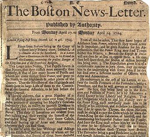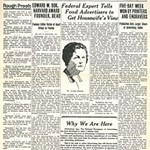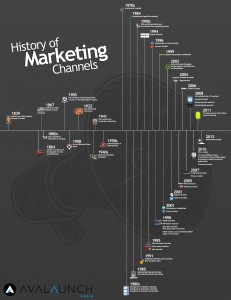Initially, advertising was looked upon for informational purpose. Advertisers used it to build brand character instead of directly selling to customers. However, it didn’t take long for businesses to realize the power of advertising as more than just informational. Often times we wondered just how advertising became an important piece in the marketing process. We did a little research on the birth of advertising in America.
The Birth of Print Advertising
Way back in the 1700s the very first newspaper sales ad was a want ad to buyers for an Oyster Bay, Long Island estate.  Shortly after, on October 2, 1729 Benjamin Franklin and his colleague purchased the local newspaper, and changed the name to Pennsylvania Gazette which included a “new advertisements” section. Franklin followed up in 1742 with the General Magazine which included ads as well. Franklin initiated a viral media – the development of print advertising. Of course this medium fell under the name of “newspaper”, but other printers followed his lead with their own newspaper versions.
Shortly after, on October 2, 1729 Benjamin Franklin and his colleague purchased the local newspaper, and changed the name to Pennsylvania Gazette which included a “new advertisements” section. Franklin followed up in 1742 with the General Magazine which included ads as well. Franklin initiated a viral media – the development of print advertising. Of course this medium fell under the name of “newspaper”, but other printers followed his lead with their own newspaper versions.
Print Advertising Gains Traction
Now that America had an advertising medium salesmen gained a voice and recognition in their communities. Government regulations, advertising agencies, and conferences began to form and shape the future of advertising. In 1873 the first advertiser’s convention was held in New York. Procter & Gamble began their advertising campaign for their Ivory Soap with a substantial $11,000 budget. “It revolutionized the world of branding, marketing and advertising, with pioneering methods that are still used today.” As America grows so with it does the sales process and advertising avenues.
The Birth of Electronic Advertising
In the 1900s marketers began introducing radio announcements and political campaign coverage was first aired at KDKA Pittsburgh in 1920. America had found its voice among communities through electronic advertising. Advertising had become a revenue generator and as such became more expensive for small business. Advertising gained recognition and headed straight into the 1929 stock market crash and became a less important feature of the expensive sales process.  Salesmen held fast during the crash and began to feel the relief in the 1930s when Chicago launched the Advertising Age, and Life magazine published its first edition to later claim $100 million in annual advertising.
Salesmen held fast during the crash and began to feel the relief in the 1930s when Chicago launched the Advertising Age, and Life magazine published its first edition to later claim $100 million in annual advertising.
Next in line was the television and all that it had in store for marketing. In the early 1920 the first television was invented by Philo Farnsworth. His invention didn’t take off because of low investor funding. GE was quick to offer a television with a three inch screen, but it did not gain a following until many years later. By this time Americans absorb print, radio, and television advertising. These mediums exploded and became a necessity for American business growth. Over the next 50 years brands became household names and earned recognition through all available advertising mediums. Companies that utilized all three avenues became the most profitable through their use of visual communication.
The Birth of Online Advertising
Lastly, with the invention of the personal computer came the Internet boom. Finally we had a way to communicate with consumers in their own homes. Families have become accustom to having computers as a fixture in their homes – offering yet another method for advertisements to reach the consumer. At the conclusion of the 20th century Internet advertising reached $2 million in generated revenue and was quickly headed to surpass $3 million and the rest is….well, history as we know it today. It seems that we have come full circle. Advertising started as a character building process for businesses and politician. With the further development of social media and constantly changing SEO parameters businesses must build their brand through as many avenues as possible. In order to build your brand effectively it is important to utilize all advertising avenues. When utilized effectively all the pieces of your marketing campaign must touch your customers at every level – print, radio/television, and electronic (social and email at the least).

